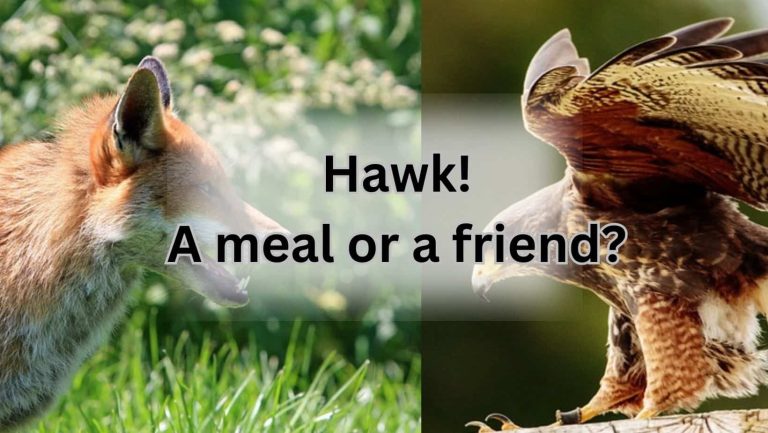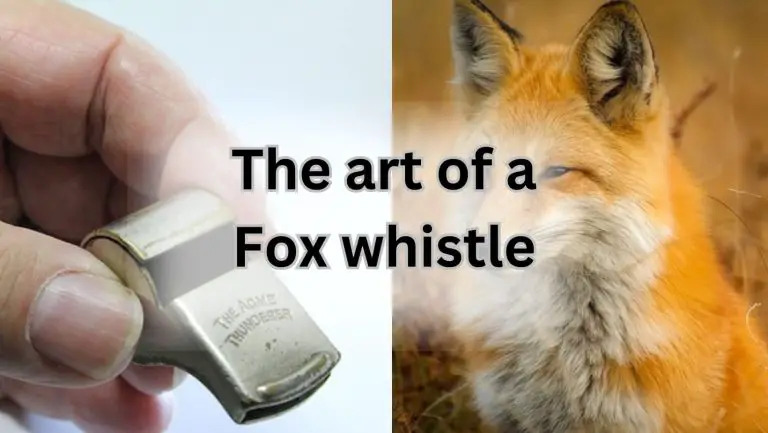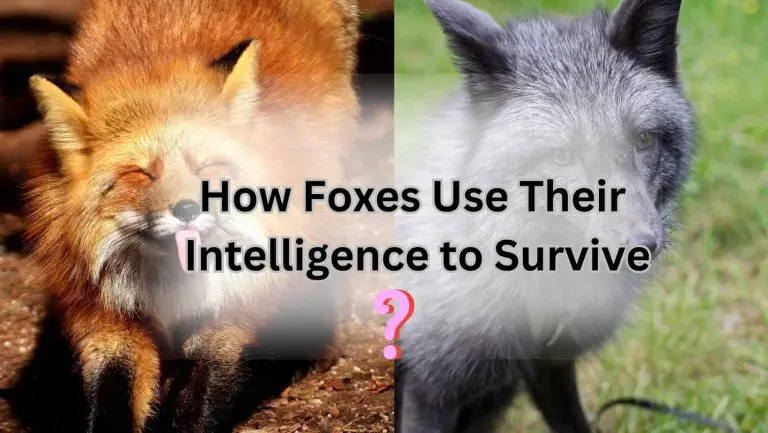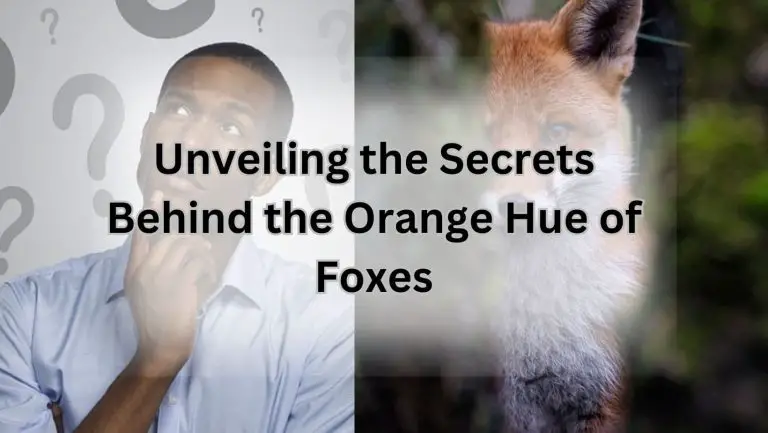Listen to the enchanting sounds of a fox in the wild
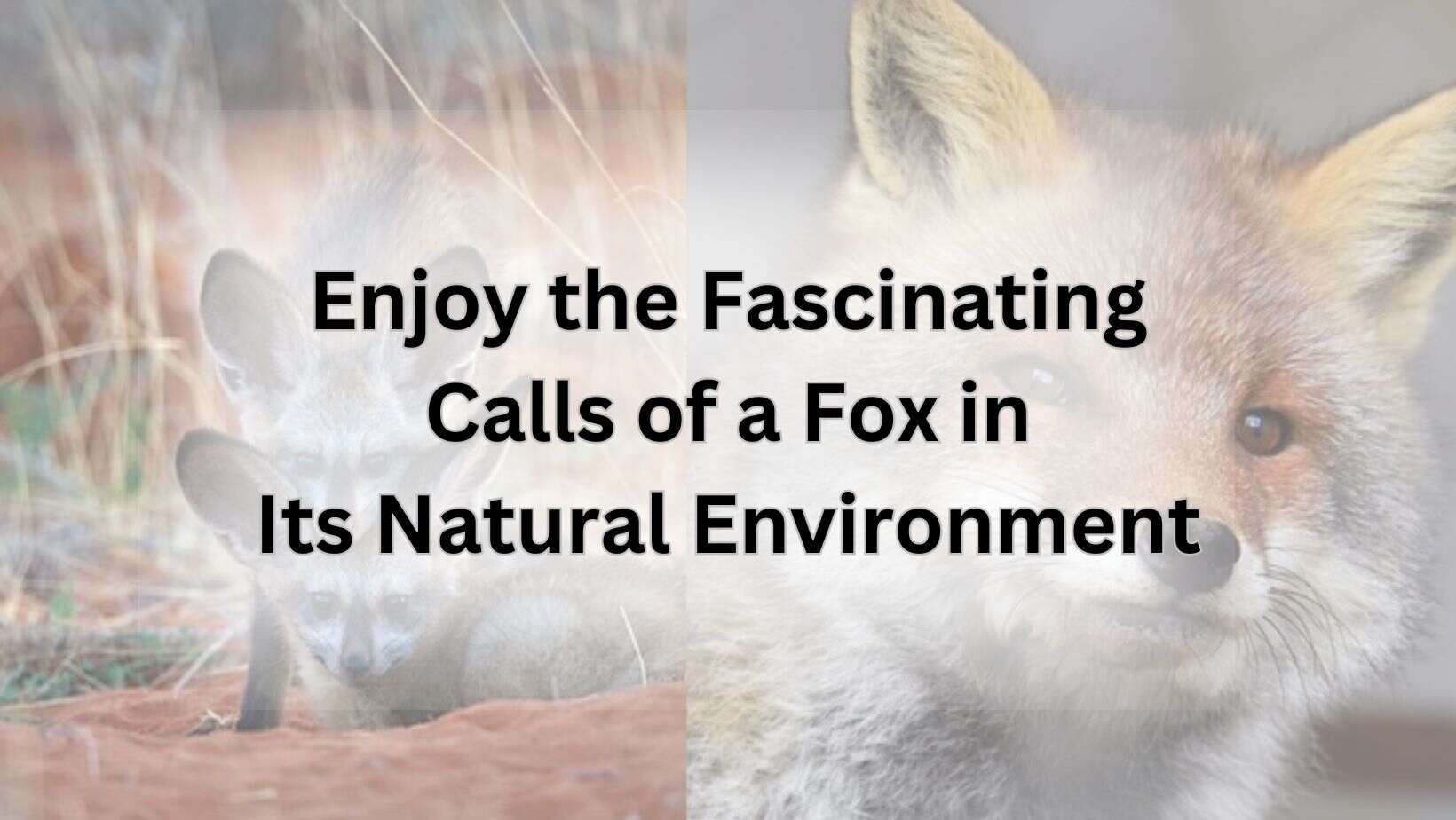
What Does a Fox Sound Like?
When it comes to the sounds of foxes, they are quite fascinating creatures with a wide range of vocalizations that can be both eerie and enchanting. So, what exactly does a fox sound like? Let’s dive into the world of fox vocalizations and explore the various noises they make.
Fox Vocalizations: The Symphony of the Wild
Have you ever wondered what a fox sounds like in the dead of night? Picture this: a series of high-pitched barks, yips, and howls echoing through the darkness, creating a haunting melody that sends shivers down your spine. These vocalizations serve as a form of communication among foxes, helping them establish territory, attract mates, and warn of potential dangers.
Sounds of Foxes: The Language of the Forest
Imagine walking through a dense forest and suddenly hearing a sharp, piercing scream that sounds almost human. That spine-chilling sound is known as a fox’s “vixen scream,” typically heard during the mating season when female foxes are calling out to potential partners. It’s a sound that is both eerie and mesmerizing, adding an air of mystery to the nocturnal world of foxes.
Fox Noises: Nature’s Orchestra
As the night falls and the moon rises, foxes come alive with a symphony of sounds that fill the air. From the rhythmic chattering of kits playing to the sharp barks of adults signaling danger, each noise serves a unique purpose in the intricate tapestry of the fox’s vocal repertoire. These noises not only showcase the intelligence and adaptability of these cunning creatures but also add a touch of magic to the wilderness.
Fox Calls: A Melody of the Wild
Have you ever heard the soft, melodious calls of foxes as they communicate with each other in the twilight hours? These gentle sounds, resembling a mix of whimpers and chirps, create a harmonious melody that is both soothing and enchanting. It’s a reminder of the beauty and complexity of nature, where even the smallest creatures have their own unique voices.
Fox Vocal Patterns: Nature’s Rhythms
From the haunting cries of the vixen scream to the playful yips of kits at play, fox vocalizations follow a distinct pattern that reflects the intricate social structure of these elusive creatures. Each sound tells a story, conveying emotions, intentions, and warnings in a language that is as old as time itself. It’s a reminder that in the wild, every sound has meaning, every call has a purpose.
Common Fox Vocalizations
1. Barks
Ever wondered what the fox says? Well, one of the most common sounds you’ll hear from a fox is its bark. These barks can vary in pitch and intensity, depending on the situation. Foxes use barks to communicate with each other, whether it’s to signal danger, establish territory, or simply to say hello. So, next time you hear a fox bark, remember that it’s just their way of chatting with their fellow foxes.
2. Screams
If you’ve ever heard a fox scream in the dead of night, you might think you’re in a horror movie. But fear not, that blood-curdling scream is just another vocalization of our foxy friends. Foxes scream for a variety of reasons, from mating calls to territorial disputes. It’s definitely not a sound you’ll forget once you’ve heard it, but it’s all part of the fascinating world of fox vocalizations.
3. Growls
When a fox is feeling threatened or agitated, you might hear it let out a low, guttural growl. This is their way of warning potential predators or rivals to back off. It’s a sound that means business and is meant to intimidate any would-be troublemakers. So, if you hear a fox growling nearby, it’s best to give them their space and let them cool off.
So, there you have it – the world of fox vocalizations is a diverse and intriguing one. From barks to screams to growls, these clever canids have a whole repertoire of sounds to express themselves. Next time you’re out in the woods and hear a fox calling out, take a moment to appreciate the beauty of nature’s own symphony. And remember, the fox may say many things, but one thing’s for sure – they certainly know how to make themselves heard!
Understanding Fox Communication
Social Interactions
Have you ever wondered how foxes communicate with each other in the wild? Let’s dive into the fascinating world of fox vocalizations. Foxes are known for their wide range of vocalizations, from barks and screams to howls and whines. These sounds serve various purposes in their social interactions, helping them establish hierarchies, maintain territories, and even find mates. Next time you hear a fox call in the night, remember that it’s their way of connecting with other foxes in the area.
Territory Marking
How do foxes mark their territories? One way they do this is through vocal signals. Foxes use a combination of barks and yips to announce their presence and warn other foxes to stay away. By vocalizing in this way, they establish boundaries and avoid unnecessary conflicts. So, if you hear a series of sharp barks echoing through the night, it’s likely a fox claiming its territory.
Reproduction Signals
Did you know that foxes also use vocalizations to attract mates during the breeding season? Male foxes often emit high-pitched screams or howls to signal their availability to potential mates. These calls can be heard from a distance and serve as a way for foxes to communicate their reproductive status. So, if you hear a fox making eerie noises in the dark, it might just be looking for love.
In the world of fox communication, vocalizations play a crucial role in maintaining social bonds, marking territories, and signaling reproductive readiness. By understanding the different sounds that foxes make, we can gain insight into their complex and fascinating lives in the wild. So, next time you hear a fox call in the night, take a moment to appreciate the intricate language of these clever canids.
Factors Influencing Fox Sounds
Environmental Conditions
Ever wondered why foxes sound different in various environments? Well, it all comes down to their surroundings. Foxes adapt their vocalizations based on the terrain they inhabit. In dense forests, their calls may sound muffled and echo, while in open fields, their barks may carry further. So, next time you hear a fox, pay attention to where you are – it might just give you a clue about their habitat.
Time of Day
Do foxes turn into night owls when the sun sets? Absolutely! Foxes are crepuscular animals, meaning they are most active during dawn and dusk. So, if you hear those eerie screams in the middle of the night, don’t worry, it’s just the foxes having a late-night chat. Their vocalizations at night may sound more intense and frequent as they communicate with other foxes in the area.
Age and Gender of Foxes
Do fox cubs sound like squeaky toys? You bet they do! Young foxes have higher-pitched calls compared to adults. Additionally, male and female foxes have distinct vocal patterns. Males often have deeper and more resonant calls, while females may produce higher-pitched sounds. So, the next time you hear a fox, try to guess if it’s a young cub or a mature adult based on their vocalizations.
Remember, fox sounds are not just random noises – they are a form of communication that reveal a lot about these fascinating creatures. So, the next time you hear those eerie cries or playful barks, take a moment to appreciate the intricate world of fox vocalizations. Who knows, you might just learn to speak fox yourself!
Variations in Fox Vocalizations
Regional Differences
Ever wondered if foxes from different regions have their own unique way of communicating? Well, let me tell you, they do! Just like humans have accents, foxes also have regional variations in their vocalizations. For example, foxes in North America may sound slightly different from those in Europe or Asia. Isn’t it fascinating how these clever creatures adapt their vocal patterns to their surroundings?
Individual Differences
Do foxes have their own distinct voices, just like we do? Absolutely! Each fox has its own unique vocal patterns, allowing them to recognize each other by their calls. Some foxes may have deeper or higher-pitched voices, while others might have a more raspy or smooth tone. It’s like a foxy choir with each member bringing their own flair to the performance!
Seasonal Changes
Do foxes change their tunes with the seasons? Well, not exactly like holiday carolers, but there are some seasonal variations in fox vocalizations. During mating season, foxes are more vocal as they communicate with potential mates. In contrast, during the colder winter months, foxes may be quieter to avoid drawing attention to themselves. It’s like their own version of a winter hush!
So, next time you hear a fox calling out in the night, remember that there’s more to their vocalizations than meets the ear. From regional accents to individual styles and seasonal changes, foxes have a rich vocal repertoire that reflects their adaptability and intelligence. Enjoy listening to the symphony of fox sounds in nature, and appreciate the diversity and complexity of these cunning canids!
Differences Between Red and Gray Fox Sounds
Red Fox Vocalizations
Ever wondered what sounds a red fox makes? Well, let me tell you, these cunning creatures are quite vocal! Red foxes are known for their wide range of vocalizations, from high-pitched screams to guttural growls. When they are communicating with each other, they use a series of barks, yips, and howls that can be quite eerie to hear in the dead of night. If you ever hear what sounds like a woman screaming in the woods, chances are it’s just a red fox having a chat with its pals.
Gray Fox Vocalizations
On the other hand, gray foxes have a more subdued vocal repertoire compared to their red cousins. They tend to communicate using softer, more melodious sounds like whines, chitters, and purrs. Gray fox vocalizations are often described as being more musical and less harsh than those of red foxes. If you ever hear what sounds like a gentle trill coming from the trees, it’s probably just a gray fox serenading its mate.
Contrasting Characteristics
So, what are the key differences between red and gray fox vocalizations? Well, for starters, red foxes are generally louder and more aggressive in their vocalizations, while gray foxes are more subtle and melodic. Red foxes tend to use their vocalizations to establish dominance and defend their territory, while gray foxes use them more for social bonding and communication within their family units. In terms of pitch and tone, red fox vocalizations are typically higher and sharper, while gray fox vocalizations are lower and softer.
In conclusion, both red and gray foxes have their own unique vocal styles that reflect their individual personalities and behaviors. Whether you’re listening to the haunting screams of a red fox or the gentle trills of a gray fox, these sounds are all part of the fascinating world of canid communication. So next time you’re out in the woods and hear a strange noise, don’t be afraid – it’s probably just a fox saying hello!
Human Interpretation of Fox Sounds
Folklore and Myths
Have you ever wondered about the mysterious sounds that foxes make and how they have been interpreted throughout history? Let’s delve into the fascinating world of folklore and myths surrounding fox vocalizations.
Scientific Analysis
What do experts say about the various vocalizations of foxes and what they mean? Let’s explore the scientific side of fox sounds and how researchers interpret these unique vocal patterns.
Pet Fox Vocalizations
Curious about what sounds your pet fox might make and what they could signify? Let’s uncover the world of pet fox vocalizations and understand the communication cues they use to express themselves.
Recording and Analyzing Fox Sounds
Technology Used
Ever wondered how we capture those fascinating fox vocalizations? Well, let me give you a sneak peek into the technology we use. Picture this – high-tech recording devices strategically placed in the wild, waiting patiently to capture the elusive sounds of the fox. These devices are equipped with sensitive microphones that can pick up even the faintest of sounds, ensuring we don’t miss a single vocalization.
Research Methods
Curious about how we analyze these recorded fox sounds? It’s not as simple as pressing play and listening. We employ sophisticated software that helps us analyze the vocal patterns of the fox. By studying the frequency, duration, and intensity of each sound, we can gain valuable insights into the behavior and communication of these cunning creatures.
Behavioral Studies
Have you ever wondered why foxes make the sounds they do? Through extensive behavioral studies, we have uncovered the significance of these vocalizations. From the eerie screams of vixens during the mating season to the playful barks of fox kits at play, each sound serves a specific purpose in the fox’s social interactions. By observing and documenting these vocalizations in their natural habitat, we can better understand the complex dynamics of fox communication.
So, the next time you hear the haunting cry of a fox in the night, remember that it’s not just a random sound – it’s a crucial form of communication for these intelligent animals. By recording, analyzing, and studying these vocalizations, we are able to unravel the mysteries of the fox’s language, offering valuable insights into their behavior and social interactions.
Conservation Implications of Fox Vocalizations
Monitoring Populations: Listening to the Foxes
Ever wondered how foxes communicate with each other through their vocalizations? These unique sounds not only play a crucial role in their social interactions but also provide valuable insights for monitoring their populations. Imagine being able to decipher the language of the foxes just by listening to their calls!
Habitat Preservation: Protecting the Fox’s Home
Have you ever thought about how the vocal patterns of foxes can help us in preserving their habitats? By understanding the different vocalizations of foxes, we can identify the specific areas where they thrive and tailor our conservation efforts to protect these vital habitats. It’s like listening to nature’s own GPS system!
Human-Wildlife Conflict Management: Finding Harmony in the Wild
Have you ever considered how fox calls can aid in managing conflicts between humans and wildlife? By studying the vocalizations of foxes, we can learn more about their behavior and habits, allowing us to implement effective strategies to prevent conflicts and promote coexistence. It’s like having a secret code to bridge the gap between humans and the wild.
As a Canid Wild Life Lover with 20 years of experience, I have witnessed firsthand the power of fox vocalizations in conservation efforts. By listening to the sounds of foxes, we can gain a deeper understanding of these fascinating creatures and work towards ensuring their survival in the wild. So next time you hear a fox call in the night, remember that it’s not just a sound – it’s a message from nature that we need to listen to and protect.
Future Research Directions
Are there New Species of Canids Yet to be Discovered?
Have you ever wondered if there are still undiscovered species of canids out there in the wild? With new advancements in technology and research methods, could we potentially uncover new species of foxes or other canids that have eluded us so far?
Exploring the Vocal Patterns of Different Fox Species
What if we delved deeper into the vocalizations of various fox species? By studying the unique vocal patterns of different fox species, we could gain a better understanding of their communication methods and behaviors. How fascinating would it be to uncover the intricacies of fox vocalizations across different species?
Utilizing Technology to Record and Analyze Fox Sounds
Imagine using cutting-edge technology to record and analyze fox sounds in the wild. By leveraging advanced audio recording equipment and software, we could capture a wide range of fox vocalizations and delve into the nuances of their communication. How exciting would it be to uncover hidden insights into the world of fox vocalizations through technological advancements?
Investigating the Impact of Human Activity on Fox Vocalizations
Have you ever considered how human activity might be affecting the vocalizations of foxes in the wild? By studying the impact of factors such as urbanization, pollution, and habitat destruction on fox vocalizations, we could gain valuable insights into the challenges these animals face in their natural habitats. How crucial is it for us to understand and mitigate the effects of human activity on fox vocalizations for the conservation of these magnificent creatures?
Exploring the Evolution of Fox Vocalizations
What if we traced the evolution of fox vocalizations over time? By examining the historical development of fox vocal patterns, we could unravel the evolutionary adaptations that have shaped the communication behaviors of these fascinating animals. How intriguing would it be to uncover the ancient origins of fox vocalizations and their significance in the natural world?
As a Canid Wild Life Lover with 20 years of experience, the future of fox vocalizations holds endless possibilities for exploration and discovery. By delving into new research directions and embracing innovative approaches, we can unlock a deeper understanding of the intricate world of fox vocalizations. Let’s embark on this exciting journey together and unravel the mysteries of fox sounds in the wild!


